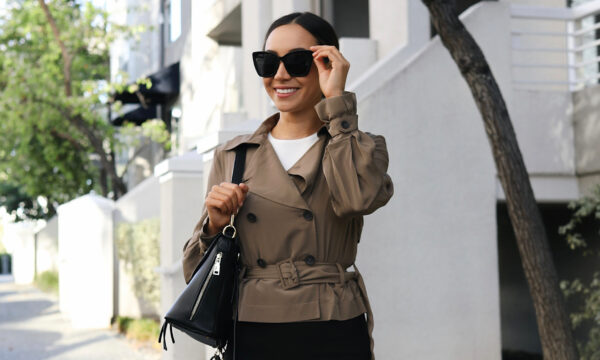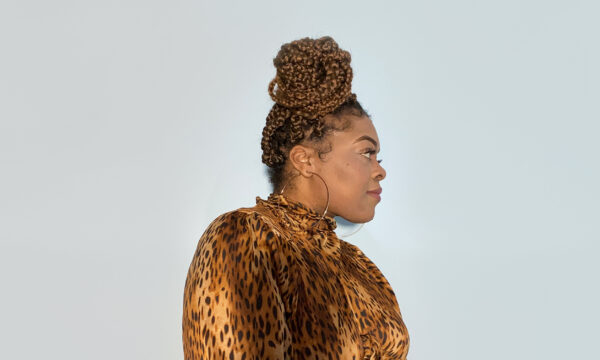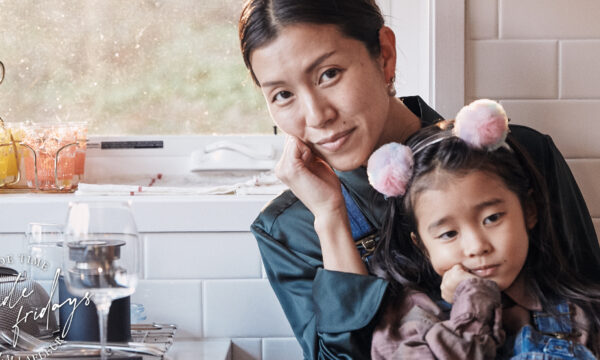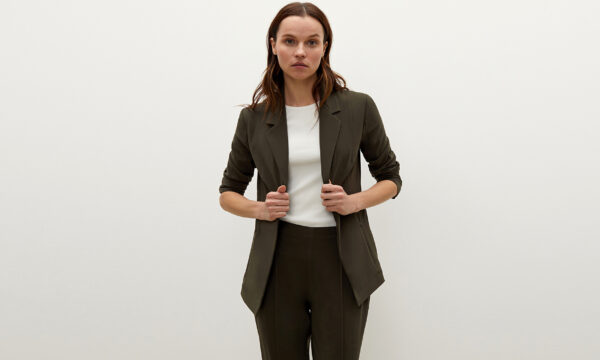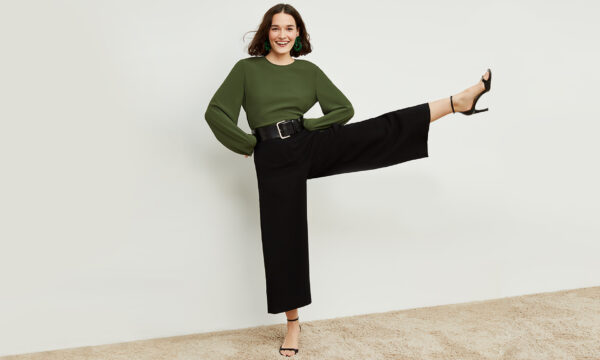
The Charli top and Talulah pants.
We Had to Fight for Our Right…to Wear Pants
Whatever you choose to put on as you get ready for work, know that choice has been made possible by centuries of women putting themselves on the line. (And you might be surprised by some of the ways they’ve done so.)
Want more M Dash?
Sign up for our weekly newsletter.
Thank you!
Imagine going outside wearing a pair of pants and being relentlessly mocked, inspiring derisive political cartoons, or even receiving death threats. Today, the garment might seem unremarkable—maybe it’s your daily attire, or simply another option in your wardrobe. But the history of women in pants is a long and controversial one. When I set out to write my new book, Dress Code: Unlocking Fashion from the New Look to Millennial Pink, I was familiar with some of this history. But I found myself surprised both by how closely the progress of the women’s movement paralleled the rise of casual dress, and by how controversies over and restrictions around pants—especially when it comes to women’s professional attire—still bedevil us today.

Bloomerism (or “freedom dress”) quickly became a bona fide movement, with like-minded women gathering to socialize in style with each other at “bloomer balls.” The wearers appreciated the way bloomers helped them carve out a certain amount of agency unavailable to women at the time. For example, the poet and abolitionist Charlotte Grimké wrote about climbing a tree in the garment, something she couldn’t do in more traditional clothes. She “obtained some fine fruit, and felt for the first time ‘monarch of all I surveyed.’” But those wearing them were harassed, and political cartoons mocked them, suggesting that the social order would be upended by bloomer-wearing women who proposed marriage to men or lounged while husbands did chores.

Photo: Fox Photos/Getty Images.
Even as bloomers became passé, new styles emerged that made women freer to pursue physical activity, sports, and travel—options that men had long enjoyed. While turn-of-the-century dress had weighed them down, confining them to the sphere of the home and rendering them ornamental, innovations that hybridized skirts and pants—like the divided skirt and culottes—gave them more leeway to roam. But there was, once again, backlash—in France, women were arrested for wearing divided skirts, while the tennis player Lili de Alvarez received death threats for wearing a Schiaparelli version on the court in the 1930s.

PhotoL Alfred Eisenstadt/The Life Picture Collection/Getty Images.

Photo: Catalogue Magazine.
Trousers for women—menswear-inspired styles with high waists and wide legs—were popularized by famous figures like Amelia Earhart, Katharine Hepburn, and Marlene Dietrich, and soon, droves of women would join them as they entered the workforce during World War II, replacing men in traditionally male jobs like factory work. By the ’80s, pantsuits, complete with banker-style pinstripes and padded shoulders that imitated a masculine silhouette, were common for women in white-collar offices. By then, pants had long become unremarkable as everyday wear, too.
But they weren’t as quickly accepted in every field, Congress being one notable example. The first woman to wear pants on the House floor was Rep. Charlotte Reid in 1969. She sported a pair of bell bottoms, then at the height of their popularity. Her colleagues treated her like a curiosity, with one coming over to say, “I was told there was a lady here in trousers, so I had to come over and see for myself.” In the Senate, it wasn’t until the astonishing date of 1993 that pants equality was achieved. Sen. Carol Moseley-Braun became the first African-American female senator in 1992, and the first woman to wear pants on the Senate floor the following year. (She was unaware of the unwritten rule against it.) That same year, Sen. Barbara Mikulski incited what became known as the Pantsuit Rebellion of 1993, enlisting her colleagues to challenge the norm by wearing trousers and jackets to work. Also in the ’90s, Hillary Clinton became the first, and to date only, First Lady to wear pants in her official portrait, in the form of a tailored black pantsuit. And when she entered the political arena herself, her rainbow of pantsuits became a personal signature (to the point where a prominent group of Clinton supporters dubbed itself Pantsuit Nation).

Photo: Matthew Lewis.

Portrait by Simmie Knox.
Throughout their time in the workplace, women have been subject to stricter dress codes and higher expectations for professional dress. They’re typically required to expend more energy—and money—than their male counterparts on pursuits like following ever-changing trends in officewear, applying “tasteful” makeup, and being covered-up while still projecting a “feminine” aura. These disparities still exist today, so it’s hardly surprising that women in pants continue to be controversial in some workplaces. When actress Nicola Thorp came to her first day at a temp job in 2015 wearing pants and flat shoes, the company she was working for demanded that she change into a dress (and that she abide by its “high heel policy.”) Thorp started a petition in protest, and her case found its way to British Parliament. While it didn’t result in policy changes, it did draw attention to the issue on social media and caused many companies to relax their dress codes accordingly. Meanwhile, female British Airways flight attendants were finally allowed to wear pants in 2016, after spending decades freezing in skirts.

The Moreland blazer, Colby pants, and Brenna earrings.
In most quarters, though, women in pants have become an unexceptional sight. The garment offers the comfort and mobility (not to mention the pockets!) that men have long been used to, along with a strong, clean-lined silhouette that, for many, is a shortcut to feeling powerful. If you work in an industry where you have control over what you wear, it’s worth remembering the road that led us here. Whatever you choose to put on as you get ready for work today, know that that choice has been made possible by centuries of women putting themselves on the line and agitating for your right to do so.
Want more fascinating fashion history? Dress Code: Unlocking Fashion from the New Look to Millennial Pink is available now.





